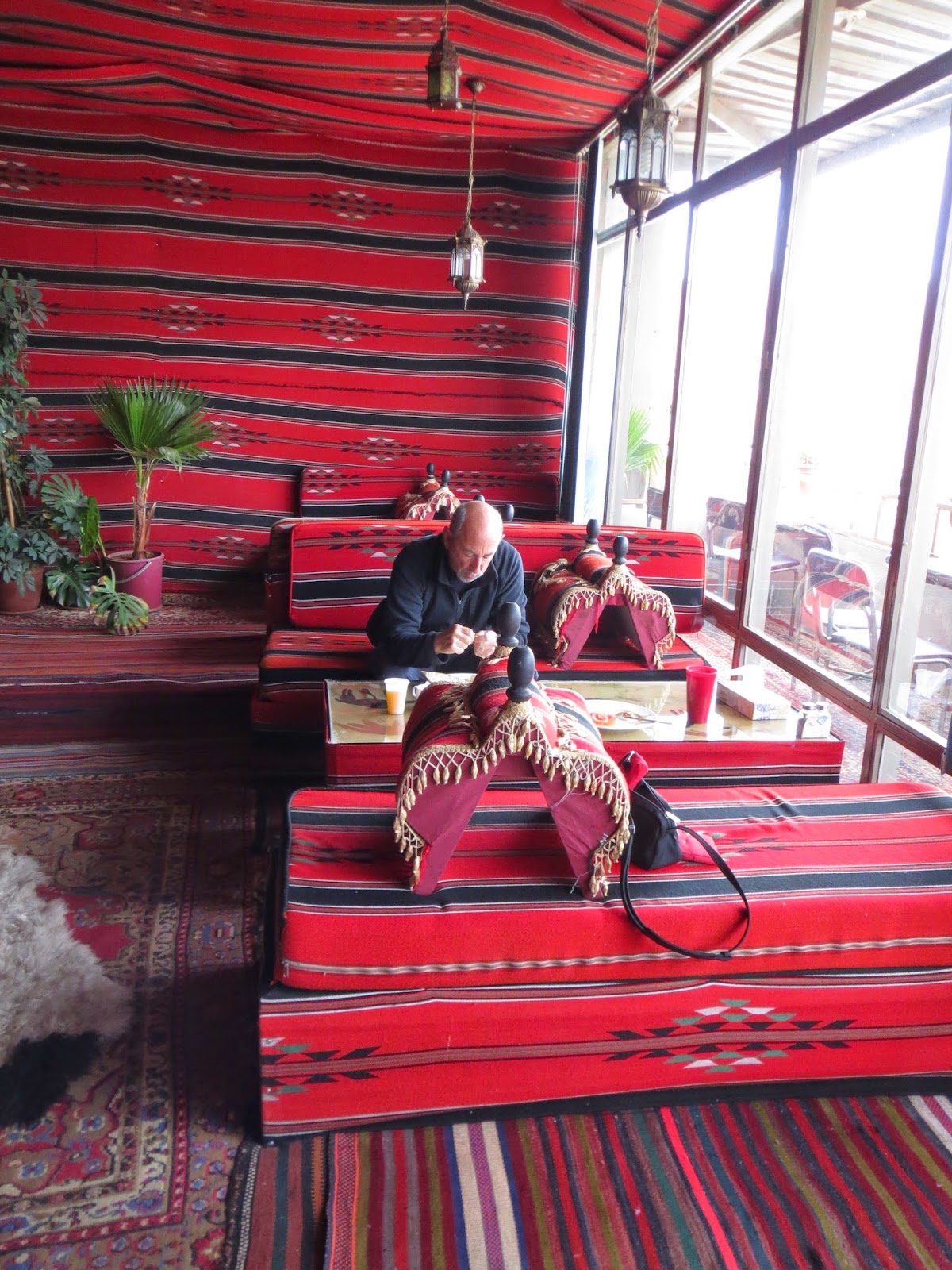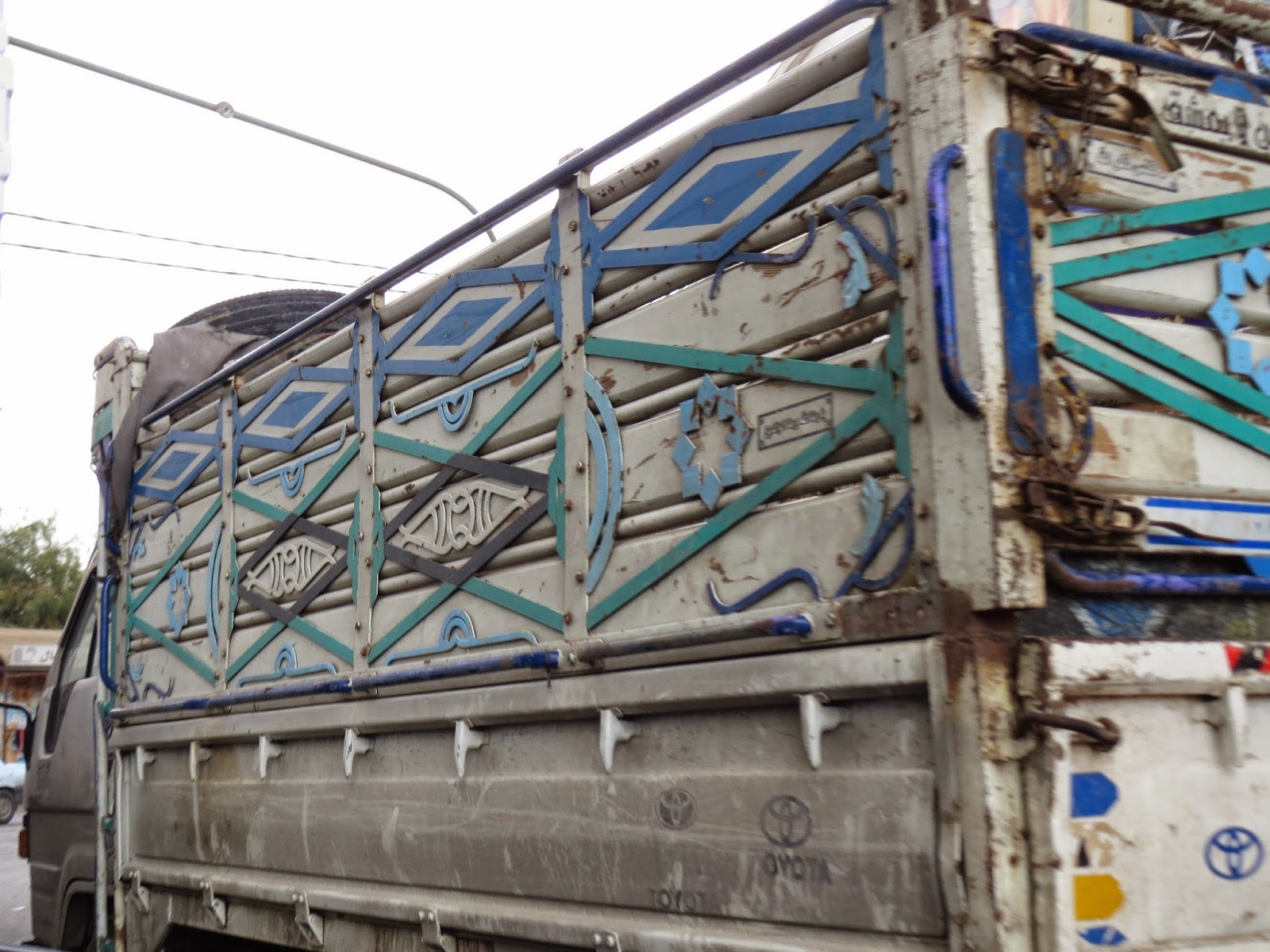We had originally planned to spend an
extra day in Petra 8:30
local bus to Jordan Amman
Upon arrival at the Bus
Station, we got a taxi for only 5JD for the pretty lengthy ride in heavily
congested traffic to the Sydney Hotel 1st Circle Amman Amman Israel
 |
The restaurant at the Rocky
Mountain Hotel in
|
We had originally planned to
arrive in Amman a day later but Steven was very apprehensive about how much
time it might take crossing from the King Hussein Bridge (as the
Jordanians call the border crossing or the Allenby Bridge as it’s
referred to by the Israelis) to Israel near Jerusalem. He had read online about
tourists having experienced horror stories with border crossings taking up to 8
hours or even the border suddenly being closed altogether for no apparent
reason by the Israeli government.
Steven had suggested that we giveAmman Amman
Steven had suggested that we give
I had done my research on Amman Amman Jordan Jordan Amman
So, after again dumping our
bags at the hotel before the official check in time, we wandered down toward
the Gold Souk with my dreaming of what I just might want! We looked at a number
of small shops, all located within a couple of blocks of each other, each
displaying row upon row of shiny gold jewelry in their windows for all
passersby to admire and drool over. Almost all the designs were incredibly
ornate and even ostentatious according to our sensibilities but were obviously
a style favored by Arab women. After much deliberation and haggling, I bought a
pair of earrings for myself as well as a necklace and a pair of earrings for a
friend. I’m keeping my fingers crossed that you’ll love both items, Darlene, as
much as I do!
Hearing from afar the Muslim
Call to Prayers being amplified over the neighborhood’s public address system,
assured us we had to close to the Al Husnyi Mosque so we walked over
there. It was closed to non Muslims then though but it was interesting to see,
through the arched doorways, just men praying to Allah. If there were a
separate women’s section, we didn’t see one at all.Then, consulting our tour information, we walked over to the Roman ruins that have survived and intentionally incorporated into the everyday bustle of the city. Approaching from
We walked past the long Corinthian Colonnade in front of the Theater to the remains of Philadelphia’s Forum or marketplace.
 |
Photos of the Forum.
|

Saw a number of what could be
called antique sewing machines on the street used by tailors.
|
|
|
 |
When we reached the remains of a large Umayyad Mosque and saw the guard closing the gates for the day, we again hit ‘pay dirt’ when the guards so kindly allowed us to peek inside for a few minutes. How incredibly fortunate we were.
 |
The huge
We quickly climbed the path
from the Temple of Hercules
 |
A view of the mosque from Byzantine Church.
|
 |
Panoramic views of
|
 |
| A view of the |
Steven the Navigator was able to get us to
 |
| Photos of our walk down |
 |
Sugar cane stalks
|
 |
Arab men wear these long
coats in cold weather over their caftans.
|
Most of the delivery trucks in
I should have taken this photo before this showing a solid line of trucks lining up for at least a mile waiting to cross the border. Once through the formalities on the Jordamian side, we had to get into a shuttle to drive us the 8km through the no man's land to the Israeli border and the lines there. We only received our passports from the Jordanian authorities once we were on the shuttle which was a tad unnerving not having them in our hot little hands the whole time.
 |
The infamous wall built by
|
 |
Probably not the smartest
thing to do to take photos as we crossed the border, especially one as volatile
as the Israeli/Jordan one!
|
We only had one roommate the
1st night, the lovely Bianca, 26, from Bamberg, Germany who
had previously spent a year on a work exchange all over Australia before
spending another year traveling by
herself in S.E. Asia. She and I spent hours chatting about her travels, life
and the world around us. Again, we hope that we’ll see Bianca in Colorado
Steven and I were sad saying good bye to Jordan as we both felt that
the Jordanians were the friendliest and most welcoming of people we had
encountered all trip. Everyone we seemed to come into contact with from Aqaba in
the south to the guides in Wadi Rum to those in the capital city of Amman,
either on the street as we passed them by or when we stopped to ask directions
or in the stores and markets and especially the taxi drivers made a point of
saying ‘Welcome to Jordan.’ It didn’t matter that of course we didn’t speak
Arabic or even if they spoke little English, they were always willing to help
us. The people of Turkey

























































No comments:
Post a Comment